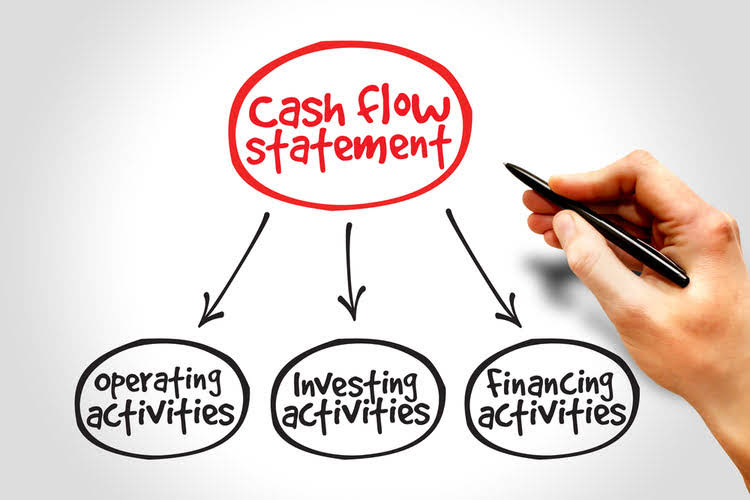
They don’t count towards the company’s outstanding shares, nor do they grant voting or dividend privileges. Companies might hold onto these shares for various reasons, like decreasing the number of shares in circulation, supporting the share value or using them for employee compensation. However, buying back these shares can reduce a company’s paid-in capital and overall equity, while selling them can increase both.
- Venture capitalists (VCs) provide most private equity financing in return for an early minority stake.
- Other long-term assets may have appreciated in value while the accountant was depreciating them.
- Sam has $75,000 worth of equity in the home or $175,000 (asset total) – $100,000 (liability total).
- Current assets are those that can be converted to cash within a year, such as accounts receivable and inventory.
Stockholders’ Equity vs. Book Value
- The market value approach relies on the current market price of shares, which reflects the company’s true value in the eyes of investors.
- To find stockholders’ equity, you simply subtract the company’s total liabilities from its total assets.
- Let’s see some simple to advanced examples to better understand the stockholder’s equity equation calculation.
- If the dividend percentage on the preferred stock is close to the rate demanded by the financial markets, the preferred stock will sell at a price that is close to its par value.
- As part of its 2024 annual report, Apple reported $56.95 billion of shareholder equity, down from $62.1 billion the year prior.
It’s what would be left for the shareholders if the company were to sell all its assets and pay off all its debts. In addition, there are some other less common events that can affect stockholders’ equity. If it pays $900 to redeem a $1,000 bond, then cash will fall by $900, but long-term debt will decline by $1,000, leaving stockholders’ equity to rise by the difference of $100. Shareholders’ equity is, therefore, essentially the net worth of a corporation. If the company were to liquidate, shareholders’ equity is the amount of money that would theoretically be received by its shareholders.
Assets
By submitting this form, you consent to receive email from Wall Street Prep and agree to our terms of use and privacy policy. But an important distinction is that the decline in equity value occurs due to the “book value of equity”, rather than the market value.

Retained Earnings
This is usually one of the last steps in forecasting the balance sheet items. Below is an example screenshot of a financial model where you can see the shareholders equity line completed on the balance sheet. Yes, stockholders’ equity can be negative when a company’s liabilities exceed its assets. This situation, known as negative equity, may signal financial distress or insolvency, indicating that the company might struggle to meet its obligations without additional financing or restructuring.
Liabilities are obligations that the company calculate stockholders equity owes to external parties, such as loans, accounts payable, and accrued expenses. Equity represents the residual claim on assets after satisfying liabilities. A company can pay for something by either taking out debt (i.e. liabilities) or paying for it with money they own (i.e. equity).
- SE is a number that stock investors and analysts look at when they’re evaluating a company’s overall financial health.
- Current liabilities are debts typically due for repayment within one year.
- The liabilities count is normally built while the firms arrange funds to spend on assets.
- A class of corporation stock that provides for preferential treatment over the holders of common stock in the case of liquidation and dividends.
- Once all liabilities are taken care of in the hypothetical liquidation, the residual value, or “book value of equity,” represents the remaining proceeds that could be distributed among shareholders.
Look at the balance sheet’s stockholders’ equity section

If negative, the company’s liabilities exceed its assets; if prolonged, this is considered balance sheet insolvency. Typically, investors view companies with negative shareholder equity as risky or unsafe investments. Shareholder equity alone is not a definitive indicator of a company’s financial health; used in conjunction with other tools and metrics, the investor can accurately analyze the health of an organization. Equity is used as capital raised by a company, which is then used to purchase assets, invest in projects, and fund operations. A firm typically can raise capital by issuing debt (in the form of a loan or via bonds) or equity (by selling stock). Investors usually seek out equity investments as they provide a greater opportunity to share in the profits and growth of Accounting Security a firm.
Long-term assets (also called non-current or fixed assets)
Aside from stock (common, preferred, and Treasury) components, the SE statement includes retained earnings, unrealized gains and losses, and contributed (additional paid-up) capital. The calculation includes information from the company’s balance sheet; it can be difficult to pinpoint the accuracy of depreciation and other factors. In addition, a company’s assets and liabilities can change at any time because of unforeseen circumstances. The simplest and quickest method of calculating stockholders’ equity is by using the basic accounting equation. Dividend recapitalization—if a company’s shareholders’ equity remains negative and continues to trend downward, it is a sign that the company could soon face insolvency. For instance, if a corporation exchanges 1,000 of its publicly-traded shares of common stock for 40 acres of land, the fair market value of the stock is likely to be more clear and objective.

It represents the company’s net worth from the perspective of its shareholders. This article addresses the question of what is stockholders’ equity and discusses its role and impact. This preferred stock feature assures the owner that any omitted dividends on this stock will be made up before QuickBooks the common stockholders will receive a dividend.


